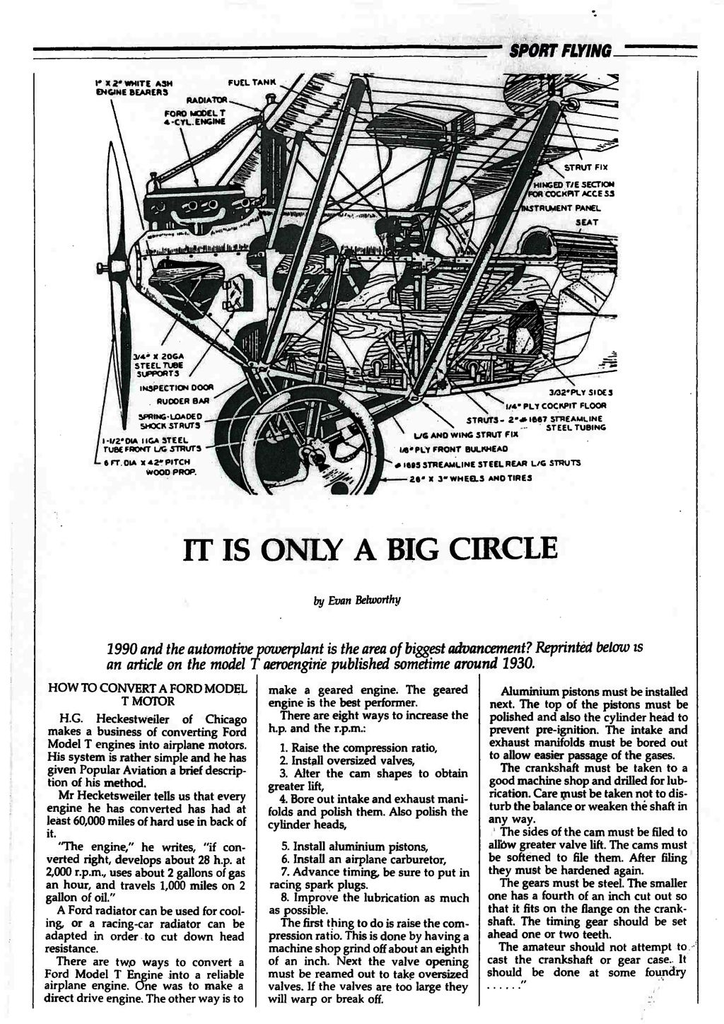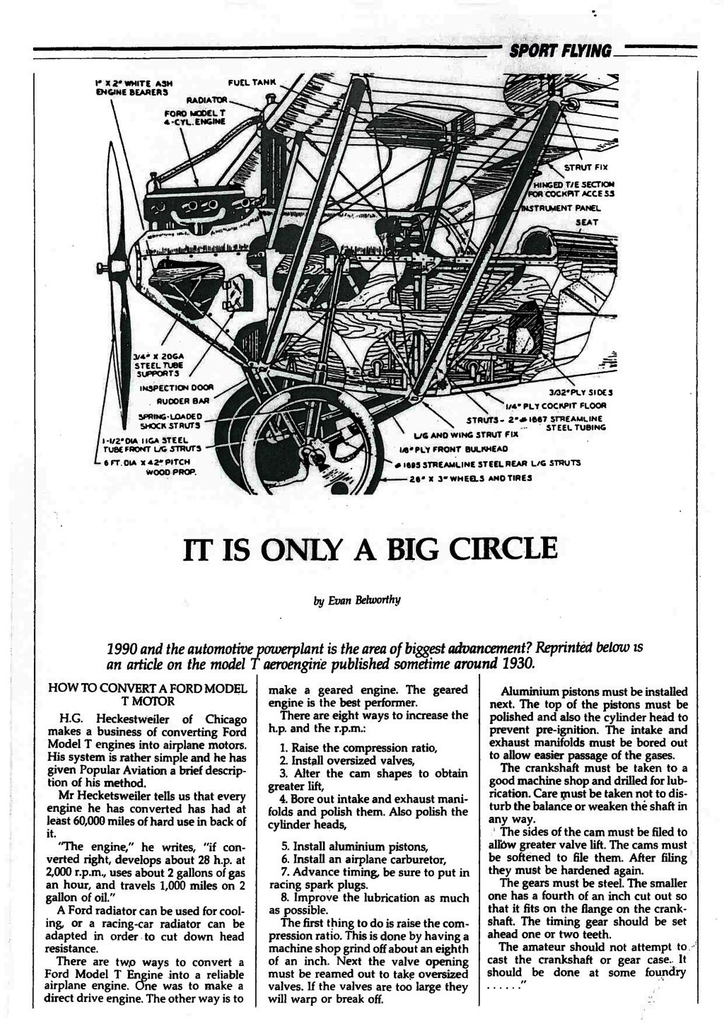It is only a big circle
- Description
 H.G. Heckestweiler of Chicago makes a business of converting Ford Model T engines into airplane motors. His system is rather simple and he has given Popular Aviation a brief
H.G. Heckestweiler of Chicago makes a business of converting Ford Model T engines into airplane motors. His system is rather simple and he has given Popular Aviation a brief description of his method.
Mr Hecketsweiler tells us that every engine he has converted has had at least 60,000 miles of hard use in back of it.
"The engine," he writes, "if converted right, develops about 28 h.p. at 2,000 r.p.m., uses about 2 gallons of gas an hour, and travels 1,000 miles on 2 gallon of oil."
A Ford radiator can be used for cooling, or a racing-car radiator can be adapted in order to cut down head resistance.
There are two ways to convert a Ford Model T Engine into a reliable airplane engine. One was to make a direct drive engine. The other way is to make a geared engine. The geared engine is the best performer.
There are eight ways to increase the h.p. and the r.p.m.:
1. Raise the compression ratio,
2. Install oversized valves,
3. Alter the cam shapes to obtain greater lift,
4. Bore out intake and exhaust manifolds and polish them. Also polish the cylinder heads,
5. Install aluminium pistons,
6. Install an airplane carburetor,
7. Advance timing, be sure to put in racing spark plugs.
8. Improve the lubrication as much as possible.
The first thing to do is raise the compression ratio. This is done by having a machine shop grind off about an eighth of an inch. Next the valve opening must be reamed out to take oversized valves. If the valves are too large they will warp or break off.
Aluminium pistons must be installed next. The top of the pistons must be polished and also the cylinder head to prevent pre-ignition. The intake and exhaust manifolds must be bored out to allow easier passage of the gases.
The crankshaft must be taken to a good machine shop and drilled for lubrication. Care must be taken not to disturb the balance or weaken the shaft in any way. The sides of the cam must be filed to allow greater valve lift. The cams must be softened to file them. After filing they must be hardened again.
The gears must be steel. The smaller one has a fourth of an inch cut out so that it fits on the flange on the crankshaft. The timing gear should be set ahead one or two teeth.
The amateur should not attempt to cast the crankshaft or gear case. It should be done at some foundry …..”
Identification
Taxonomy
- Community Tags


